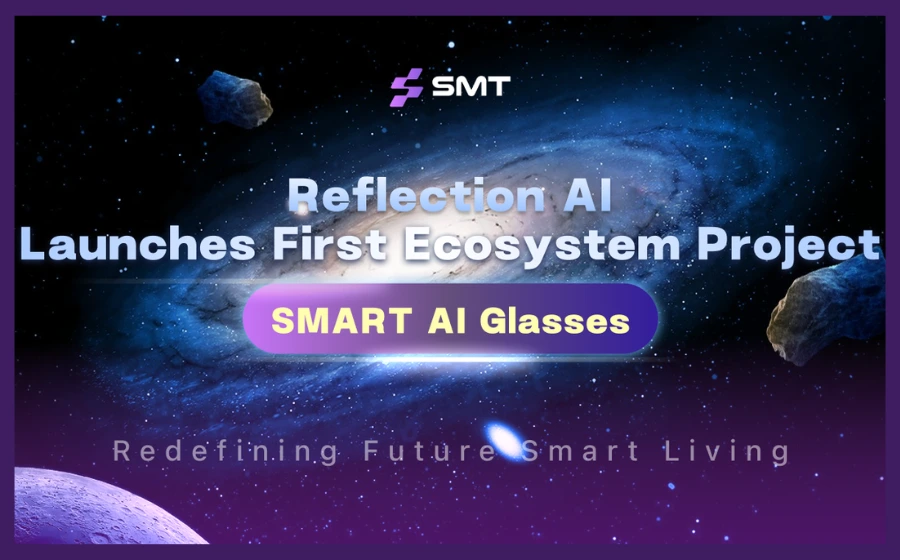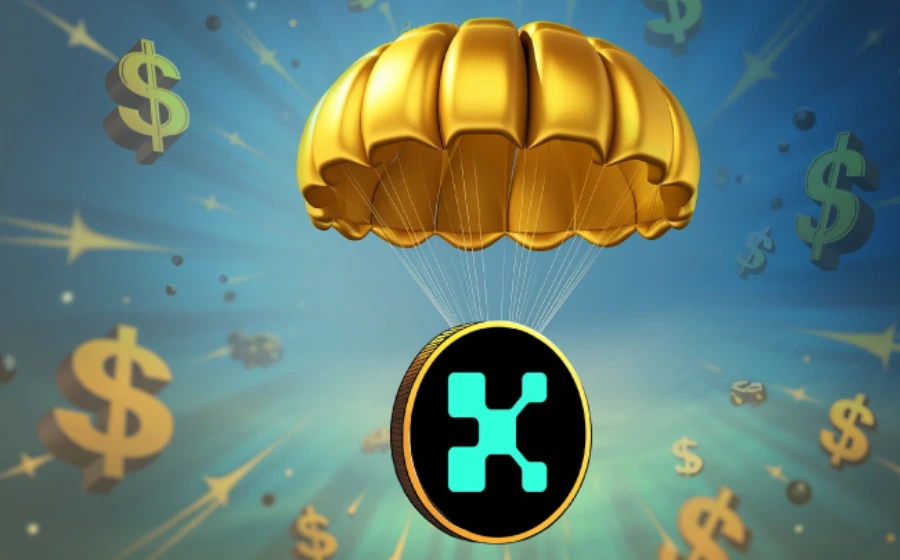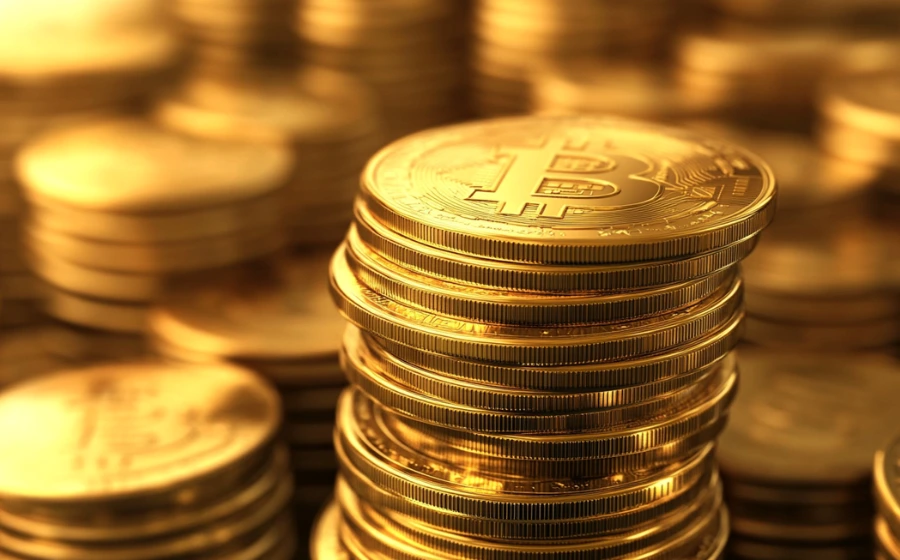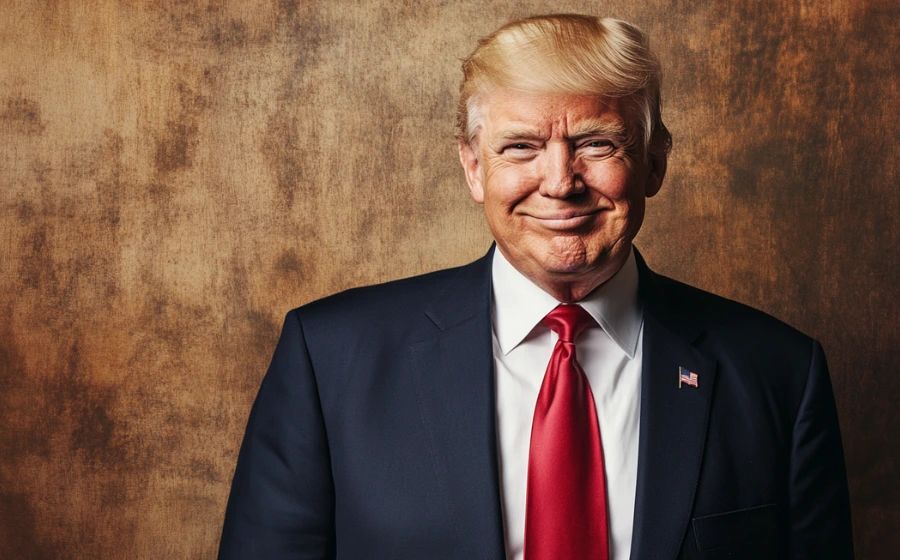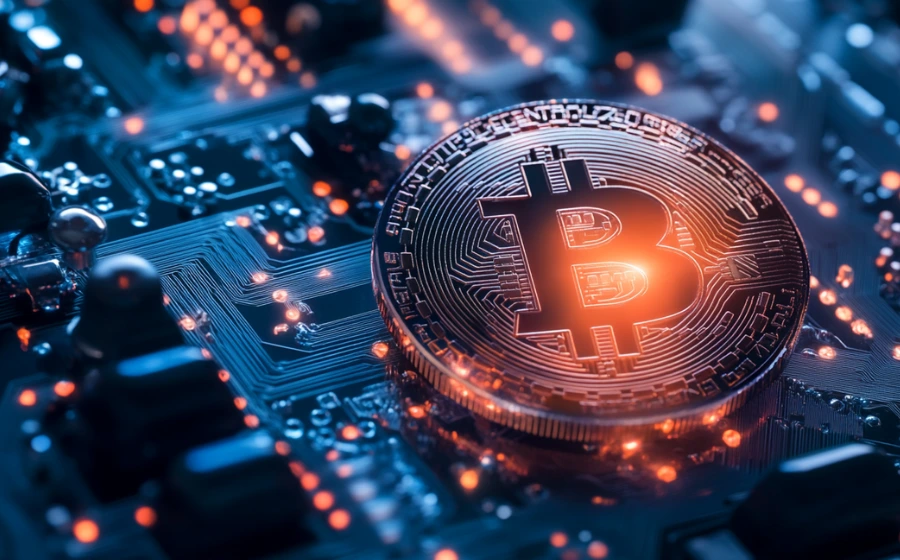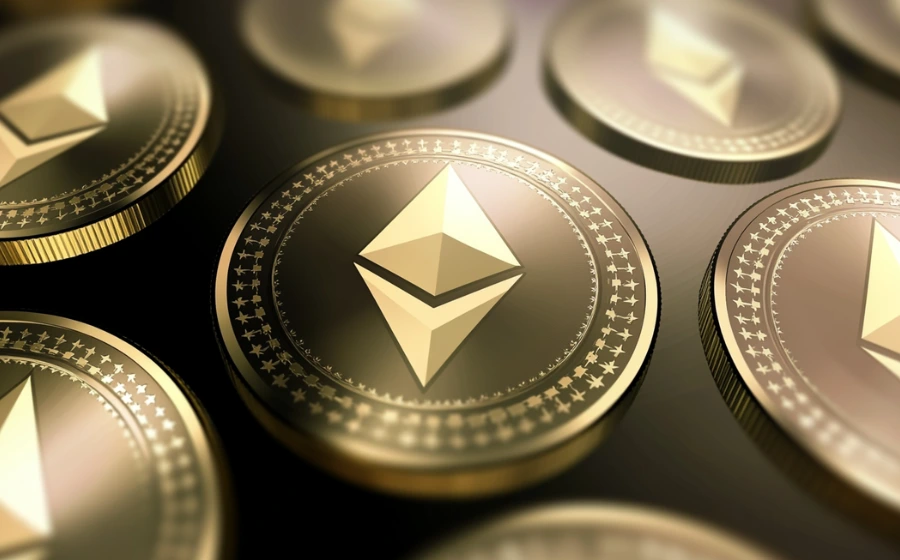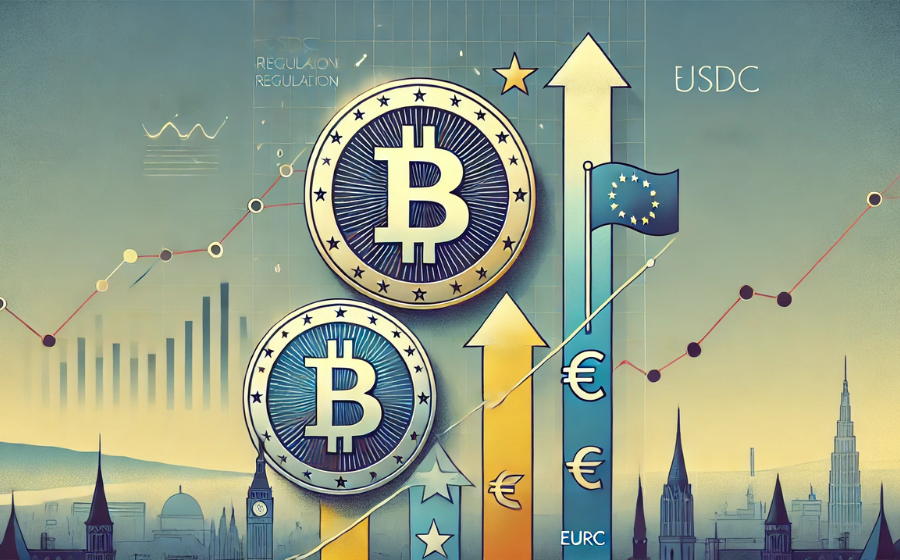
KEYTAKEAWAYS
- Circle's USDC and EURC are the first global stablecoins to comply with EU's MiCA regulations.
- MiCA regulations push stablecoins towards mainstream financial infrastructure with clear legal frameworks.
- Circle's compliance boosts its competitive edge over Tether's USDT in the European market.

CONTENT
Circle’s USDC and EURC stablecoins become the first to comply with EU’s MiCA regulations, marking a significant milestone in the global adoption of stablecoins in mainstream finance. Learn more details with CoinRank through the article!
CIRCLE ANNOUNCES COMPLIANCE OF USDC AND EURC STABLECOINS WITH EU’S NEW STABLECOIN REGULATIONS
Circle has announced that its USDC and EURC stablecoins are now compliant with the EU’s newly established stablecoin regulations, becoming the first global stablecoin issuer to comply with the MiCA regulations. Starting July 1, Circle will officially issue these two stablecoins to European customers.
This marks a significant milestone in the development of the internet financial system, signifying that one of the world’s largest economies has established clear regulations to make stablecoins legitimate electronic money, pushing the cryptocurrency market into a new stage of mainstream payment, financial, and commercial infrastructure.
Previously, CoinRank published an in-depth report regarding the European MiCA Act, which deeply analyzed the impact of the MiCA Act on the industry, especially the stablecoin market. MiCA requires that stablecoins backed by fiat currency must have sufficient liquidity reserves and obtain an “Electronic Money License (EMI).” It also sets transaction volume limits and other asset support requirements for stablecoins. June 30 is a crucial deadline requiring exchanges to delist non-compliant stablecoins.
Circle’s USDC is expected to capture market share from Tether Holdings Ltd.’s USDT. OKX, Binance, Bitstamp, and Kraken have already taken measures to change their support for USDT in the EU this year, canceling the ability to use this stablecoin to buy or sell other crypto assets.
CIRCLE’S OPPORTUNITY PARALLELS USDT‘S RISE
In a recent report discussing stablecoins, some experts claimed that USDT‘s greatest advantage is its first-mover advantage, but its rise was mainly due to exchange support and market booms. Starting from the early Bitcoin blockchain era to the later Ethereum ecosystem, USDT was an undeniable pioneer and accurately predicted the market boom. If we review its holding addresses and market value, although established in 2014, USDT truly began its rise in 2017. That year, besides a bull market, USDT started massive issuance, criticized by the market for manipulating Bitcoin prices.
However, in retrospect, this was a misinterpretation of cause and effect. Overlooked was the fact that in the same year, China shut down virtual currency trading, and more importantly, USDT was listed on the top three exchanges simultaneously.
Currently, according to Chainalysis’ “2023 Cryptocurrency Geography Report,” the region accounted for 17.6% of global transaction volume from July 2022 to June 2023. MiCA regulations have cleared the way for Circle to thrive in this area.
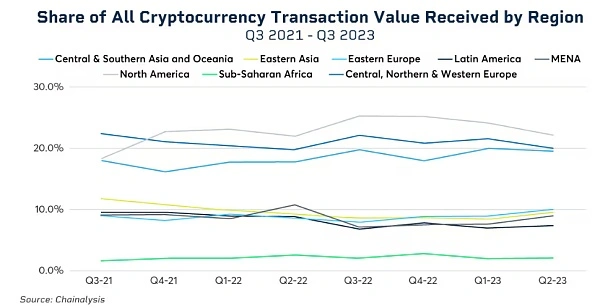
Circle is poised to benefit from the growth and adoption of the euro digital currency (i.e., euro stablecoin). MiCA provides clear rules for the issuance and operation of euro digital currencies, allowing banks and electronic money institutions to integrate euro stablecoins as core parts of their products and services. This means that the entire regulated financial sector in Europe can now adopt this network, significantly expanding the use of stablecoins in commerce and finance. This market, as seen by Aiying, is enormous.
CIRCLE’S GLOBAL COMPLIANCE VISION AND STARTING POINT
Industry veterans know that USDC rose during the USDT crisis, with transparency, regulation, and more liquid asset reserves winning customer favor. Reviewing USDC’s rise, its holding addresses usually increased when USDT holdings declined, typically during USDT risk events. Notably, early USDC market expansion greatly benefited from being the only stablecoin trading pair on the regulated exchange Coinbase, driving its challenge to USDT’s dominance. Due to compliance, DeFi protocols favor USDC, and liquidity mining quickly boosted USDC volumes, giving it an edge on the blockchain. In 2020, after Maker introduced regulated stablecoin USDC, it became the preferred choice for major DeFi protocols. Currently, MakerDAO, Compound, and Aave are the main supporters of USDC, benefiting from regulatory advantages and lower volatility compared to USDT. USDC’s initial advantage can be summarized as a compliance advantage.
GLOBAL COMPLIANCE EFFORTS BY CIRCLE
Circle is registered as a Money Services Business with the U.S. Treasury’s Financial Crimes Enforcement Network and operates under state money transmission laws, generally regarded as a form of prepaid access. Compared to USDT, USDC’s reserve assets are segregated, protected under New York banking law and federal bankruptcy law if Circle goes bankrupt.
Circle was the first crypto company to receive an electronic money transmission license in the U.S. and the first to obtain a New York BitLicense, also holding an electronic money issuance license in the UK.
Two years ago, the EU reached the MiCA agreement, later approved by the European Parliament, becoming the world’s most comprehensive stablecoin and digital asset market regulation. Circle subsequently launched the euro stablecoin and fully complied with the new EU regulations. France, at the forefront of crypto and digital asset regulation, was chosen by Circle as its European headquarters, a wise decision evidenced by close cooperation with France’s ACPR regulatory authority to align business with MiCA regulations.
Circle has now obtained an electronic money issuance license from ACPR and become a compliant issuer of USDC and EURC under MiCA. European customers can now acquire USDC and EURC directly through Circle Mint France.
USDC has successfully become the only global major stablecoin compliant with the new European stablecoin regulatory framework. Circle’s close collaboration with regulatory authorities in France, the EU, and the U.S. has achieved complete interchangeability of global stablecoins on blockchain networks, maintaining technological innovation while adhering to strict regulatory standards.
Currently, all USDC and EURC circulating in Europe comply with MiCA regulations. All EURC reserves held by Circle are managed under the supervision of French regulators, while USDC reserves in Europe are managed by globally systemic important banks within the EU. European USDC holders retain full interchangeability globally, enabling transactions, transfers, self-custody, DeFi usage, and more without any changes.
Additionally, USDC is not directly exchangeable with individuals. For USDT, amounts over $100,000 can be exchanged directly with Tether after paying a registration fee, but Circle operates on a client tier basis. Only its partners or A-tier clients (exchanges, financial institutions) are eligible for direct exchanges with Circle. Individual users (B-tier) must use third-party channels (e.g., Coinbase). Starting immediately, Circle will issue and redeem USDC and EURC directly with major institutions in the European market through Circle Mint France, including exchanges, market makers, brokerage firms, consumer wallets, fintech companies, payment institutions, banks, and large enterprises. This market sales system greatly reduces the risk of money laundering for users, effectively managing and isolating risks through large B-tier clients.
CONCLUSION
The launch of MiCA signifies a major shift in market structure, with comprehensive stablecoin rules expected in the next year from major global jurisdictions (including Japan, the U.S., the UK, Singapore, Hong Kong, UAE, Brazil, etc.), all requiring strict regulatory compliance. The gray market space of the wild era is being continuously compressed, ultimately merging with the compliant regulatory market. We are all witnesses to this financial era transformation.
